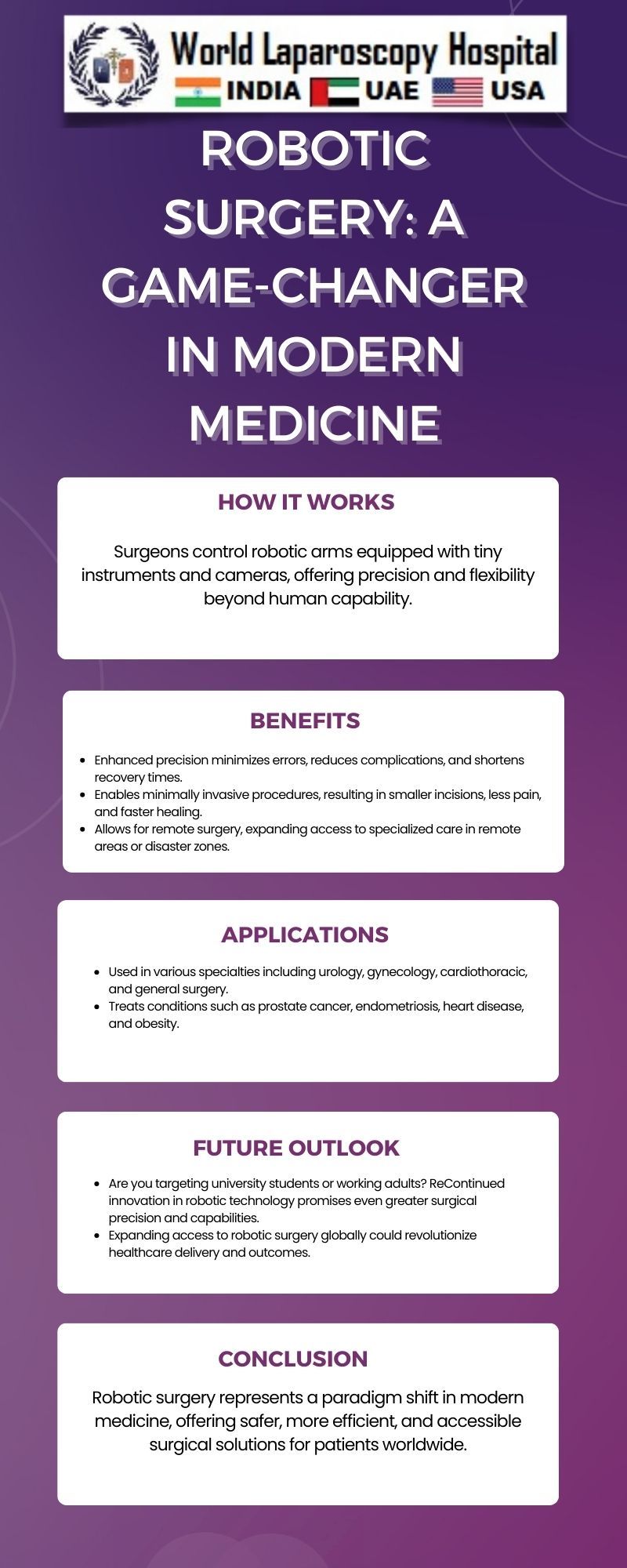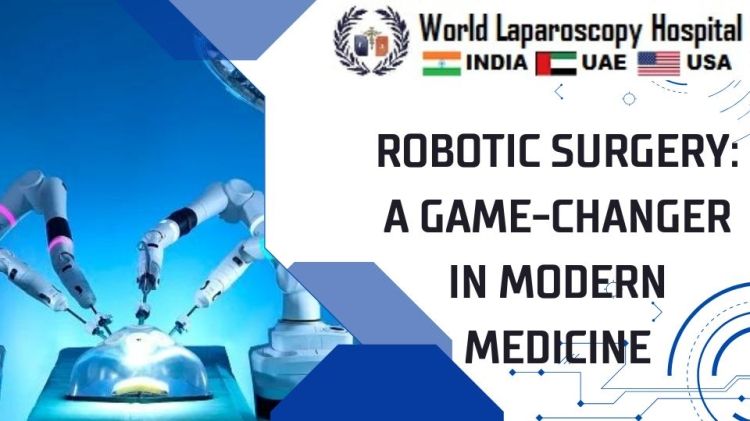Robotic Surgery: A Game-Changer in Modern Medicine
Introduction:
Robotic surgery represents a paradigm shift in the field of modern medicine, offering unparalleled precision, flexibility, and efficiency in surgical procedures. This article explores the evolution, mechanics, applications, benefits, and challenges of robotic surgery, highlighting its transformative impact on healthcare.

Evolution of Robotic Surgery:
Robotic surgery traces its origins back to the 1980s when pioneering researchers and engineers began experimenting with robotic-assisted systems for surgical purposes. The introduction of the PUMA 560 robotic arm in 1985 marked a significant milestone, laying the groundwork for future advancements in robotic surgery. Subsequent developments, including the da Vinci Surgical System introduced in the early 2000s, propelled robotic surgery into mainstream medical practice.
Mechanics of Robotic Surgery:
Robotic surgical systems consist of three main components: the console, the robotic arms, and the endoscopic camera. Surgeons operate from a console equipped with hand and foot controls, providing a 3D view of the surgical field. The robotic arms, controlled by the surgeon's movements, manipulate specialized surgical instruments with precision and dexterity. Meanwhile, the endoscopic camera provides high-definition imagery, offering a detailed view of the surgical site.
Applications of Robotic Surgery:
Robotic surgery finds application across various medical specialties, including urology, gynecology, general surgery, cardiothoracic surgery, and orthopedics. In urology, robotic-assisted prostatectomy has become the gold standard for treating prostate cancer, offering improved outcomes and reduced complications. Similarly, in gynecology, robotic surgery enables minimally invasive procedures for conditions such as endometriosis and uterine fibroids, leading to faster recovery times and decreased hospital stays.
Benefits of Robotic Surgery:
The advantages of robotic surgery are manifold. Enhanced precision and dexterity enable surgeons to perform intricate procedures with greater accuracy, minimizing the risk of complications and tissue damage. Moreover, smaller incisions result in reduced blood loss, decreased pain, and faster recovery times for patients. Additionally, robotic systems facilitate access to hard-to-reach anatomical structures, expanding the scope of minimally invasive surgery.
Challenges and Limitations:
Despite its numerous benefits, robotic surgery presents certain challenges and limitations. High costs associated with equipment procurement, maintenance, and training pose financial barriers to widespread adoption. Moreover, concerns regarding the learning curve for surgeons and potential technical malfunctions necessitate comprehensive training and stringent quality control measures. Additionally, limited haptic feedback and reliance on visual cues may impede surgical performance in certain cases.
Future Directions:
The future of robotic surgery holds promise for continued innovation and advancement. Ongoing research aims to enhance robotic systems with artificial intelligence, machine learning algorithms, and augmented reality technology, further augmenting surgical precision and efficiency. Additionally, efforts to address cost constraints and expand access to robotic surgery in resource-limited settings are underway, with the potential to democratize healthcare and improve patient outcomes worldwide.
Conclusion:
Robotic surgery represents a transformative force in modern medicine, revolutionizing surgical practice and patient care. With its unparalleled precision, flexibility, and efficiency, robotic systems have become indispensable tools for surgeons across various specialties. While challenges and limitations persist, ongoing innovation and research promise to further optimize robotic surgery, paving the way for enhanced patient outcomes and improved healthcare delivery in the years to come.
